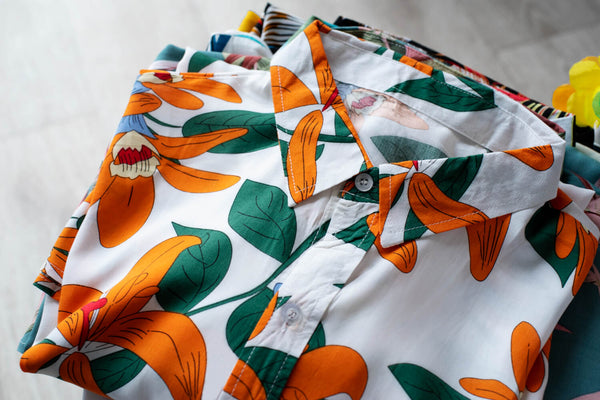Custom printing on fabric adds a whole new dimension to the fashion and design world. It enables designers to produce the best quality fabric designs that match any designer’s vision or imagination. This process has been made even more accessible with the advent of mass production techniques. Here’s a comprehensive guide on designing your textiles with mass production.
The Process of Custom Printing on Fabrics
Custom fabric printing involves applying a design onto a fabric using various techniques. Such include screen printing, which has been traditional, while others are modern. Method selection depends on the simplicity or intricacy of designs, fabric type, and production quantity.
Screen Printing
It is a traditional method that involves creating a stencil (or a ‘screen’) and applying layers of ink onto the fabric surface. It’s ideal for designs with one or two colours and large-scale production. However, it’s unsuitable for designs with many colours or intricate details.
Digital Printing
Digital printing uses a computer and a digital printer to print the design directly onto the fabric. It’s perfect for designs with multiple colours and complex patterns. High-resolution digital print is kinder to the environment compared with conventional methods. On the other hand, it may prove costlier, especially since this is the case with small-scale manufacturing.
Sublimation Printing
It is a technique that uses heat to transfer dye onto the fabric. It’s best for polyester fabrics and allows for vibrant, high-quality prints. However, it’s not suitable for natural fabrics like cotton or silk.

Designing Your Textiles
Designing your textiles involves creating a unique design and choosing the suitable fabric and printing method. You need to understand colour theory, composition, and digital design tools. You’ll need to consider the purpose of the fabric (e.g., clothing, home décor) and the characteristics you want (e.g., durability, feel).
The design should be high-resolution to ensure a clear and sharp print. You can make your design using graphic design software or hire a professional designer.
The Benefits of Custom Printing on Fabrics
Custom printing on fabrics offers numerous benefits. It allows for complete creative freedom, enabling you to create unique and personalised textiles. It’s also a great way to stand out in the market and offer something different to your customers. Moreover, with mass production, you can create high-quality custom textiles at an affordable price.
Fabric Selection
The fabric you choose for custom printing plays a crucial role in the final product. Different fabrics have different properties that can affect the print quality and durability. For instance, natural fabrics like cotton and silk can offer a soft feel and vibrant prints, but they may require special care. Synthetic fabrics like polyester are durable and easy to care for but may feel less luxurious.
Sampling
Before moving to mass production, it’s essential to create a sample. This allows you to check the print quality and make any necessary adjustments. It’s a crucial step to avoid costly mistakes in mass production.

Quality Control
Quality control is crucial in mass production. It involves checking the prints for defects and ensuring they meet your quality standards. Any issues must be addressed immediately to prevent them from affecting the entire production batch.
Working with a Printing Company
Partnering with a reliable print house will contribute significantly to the success of your personalised fabric print job. They will lead you on different paths by advising you on suitable printing methods and materials and guaranteeing a high standard of printed images. It’s essential to clearly communicate your needs and check their previous work to ensure they meet your expectations.
Mass Production
Once your design is ready, you can move on to mass production. This involves working with a fabric printing company that can handle large-scale production. They’ll help you choose the suitable printing method and ensure the quality of the prints. Mass production allows you to create many custom-printed fabrics at a lower cost per unit.
Marketing and Selling Your Custom Fabrics
Once your custom fabrics are ready, you can market and sell them. Make a brand storyline out of your exclusive designs and high-quality material. They can be sold online, in physical stores, or at craft fairs. Effective marketing will allow you to create a broad clientele for your tailor-made fabrics.
The Future of Custom Printing on Fabrics
The future of custom printing on fabrics looks promising. With technological advancements, we can expect higher-quality prints, more sustainable practices, and more accessible tools for designers and businesses. Custom printing on fabrics is not just a trend; it’s a powerful tool for endless creativity and innovation.
Ultimately, custom printing on fabrics is a powerful tool for designers and businesses. It offers endless possibilities for innovation and creativity, and mass production makes it more accessible than ever. So, why not explore this exciting world and start designing your textiles today?
 Call Us
Call Us

